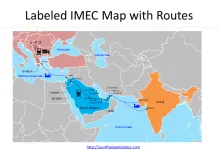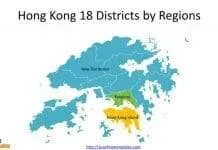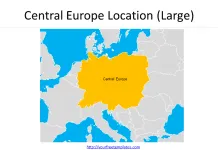The Maslow’s hierarchy of needs Template in PowerPoint format includes two slides. Firstly we have the traditional Maslow’s hierarchy of five levels. Secondly the maslow pyramid is extended with the sixth level of Self-transcendence. As the diagram PowerPoint template series, you can also find our Data Mining, Machine Learning, cloud computing, Artificial Intelligence and BlockChain PowerPoint templates.
Maslow’s hierarchy of needs is a psychological theory proposed by Abraham Maslow in 1943, which outlines human motivation structured in a hierarchical manner. This theory is often depicted as a maslow pyramid with five levels representing different needs that motivate human behavior. From the bottom of the hierarchy upwards, the needs are: physiological, safety, love/belonging, esteem, and self-actualization.
Slide 1, Maslow’s hierarchy of needs for five levels.
Physiological Needs
At the base of the pyramid are physiological needs, the fundamental requirements for human survival. This level includes necessities such as air, water, food, shelter, and sleep. Maslow posited that these needs must be satisfied first before individuals can attend to needs higher up in the hierarchy.
Safety Needs
Once physiological needs are fulfilled, the second tier of safety needs becomes prominent. These include security of environment, employment, resources, health, and property. It reflects the human desire for a predictable, orderly world where unfairness and inconsistency are under control. The need for safety contributes to behaviors that ensure physical safety, financial security, and wellness.
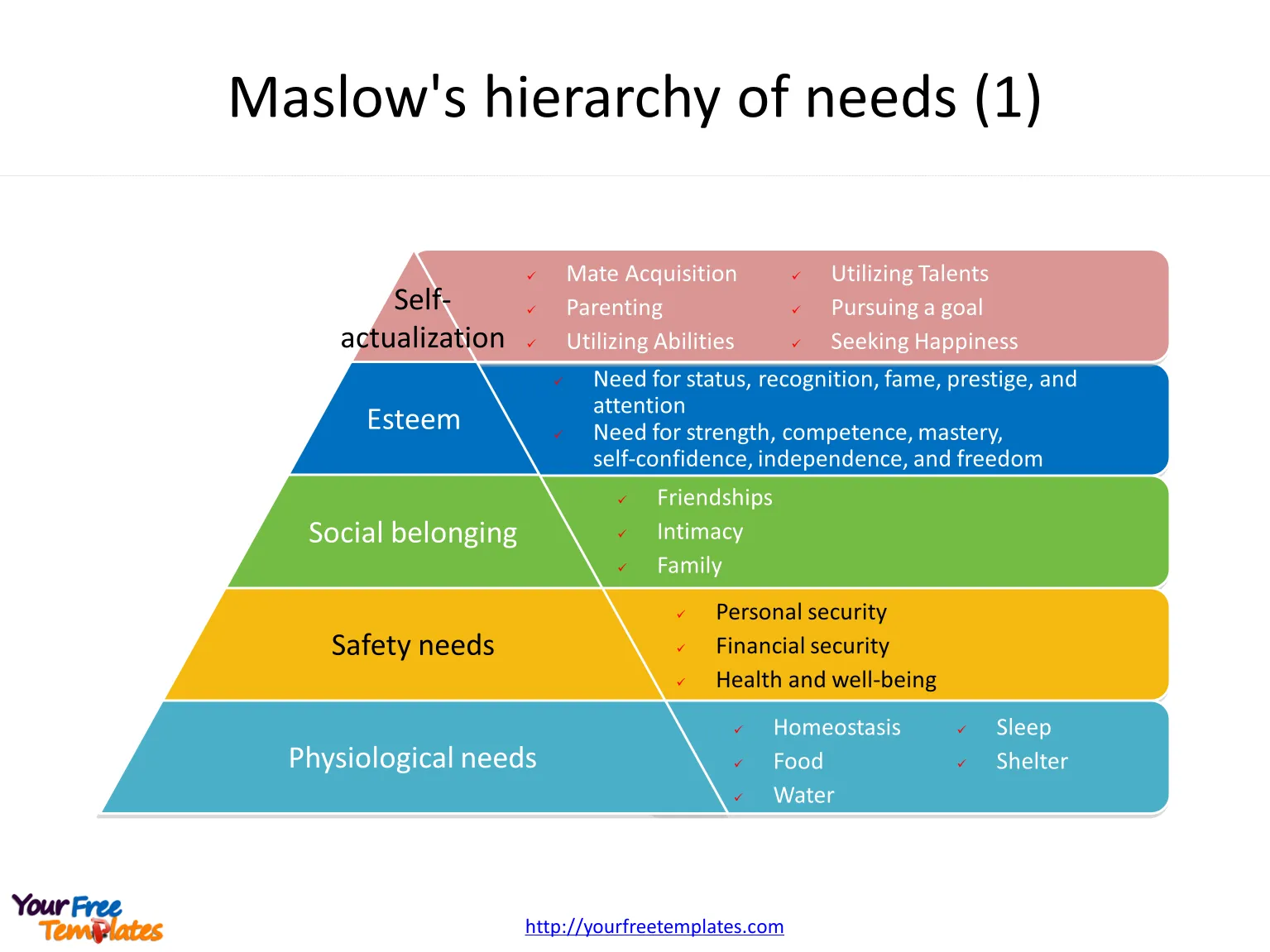
Love/Belonging Needs
The third layer is love and belonging needs. After addressing physiological and safety needs, the importance of interpersonal relationships emerges. This level encompasses friendship, intimacy, trust, and acceptance, receiving and giving affection and love. Belongingness refers to being part of groups, including family, peers, and colleagues.
Esteem Needs
The fourth tier represents esteem needs which include self-esteem, respect from others, status, recognition, strength, and freedom. This category is associated with gaining the respect and appreciation of others, as well as self-respect and personal worth. Fulfilling these needs leads to feelings of self-confidence, value, and competence.
Self-Actualization Needs
At the top of Maslow’s hierarchy is self-actualization, a state Maslow described as achieving one’s full potential, including creative expression. It is the realization of personal potential, self-fulfillment, seeking personal growth, and peak experiences. Maslow believed that to achieve this state, one must not only achieve the previous needs but master them.
Maslow’s hierarchy of needs has been influential in various fields, including psychology, education, and business, providing a framework for understanding human motivation and personal development. Despite its criticisms and considered overly-simplistic by some, it remains a valuable tool for understanding the complexity of human needs and their influence on behavior.
Slide 2, Maslow’s hierarchy of needs for six levels.
In later developments of his theory, Abraham Maslow introduced a level beyond self-actualization, known as self-transcendence. Positioned as the pinnacle of his revised hierarchy, self-transcendence expands on the concept of realizing one’s full potential by focusing on the well-being of others, the community, and the environment at large, rather than the self alone. This sixth level of this maslow pyramid represents the highest form of human motivation, according to Maslow’s extended model.
Self-transcendence is characterized by a deep sense of altruism, spirituality, and a connection to something greater than oneself. Individuals motivated by self-transcendence seek to foster relationships that transcend personal needs, aiming to contribute to the broader society and achieve a sense of unity with the world. This can manifest through acts of charity, environmental stewardship, spiritual practices, or any endeavor that focuses on improving the lives of others or the health of the planet.
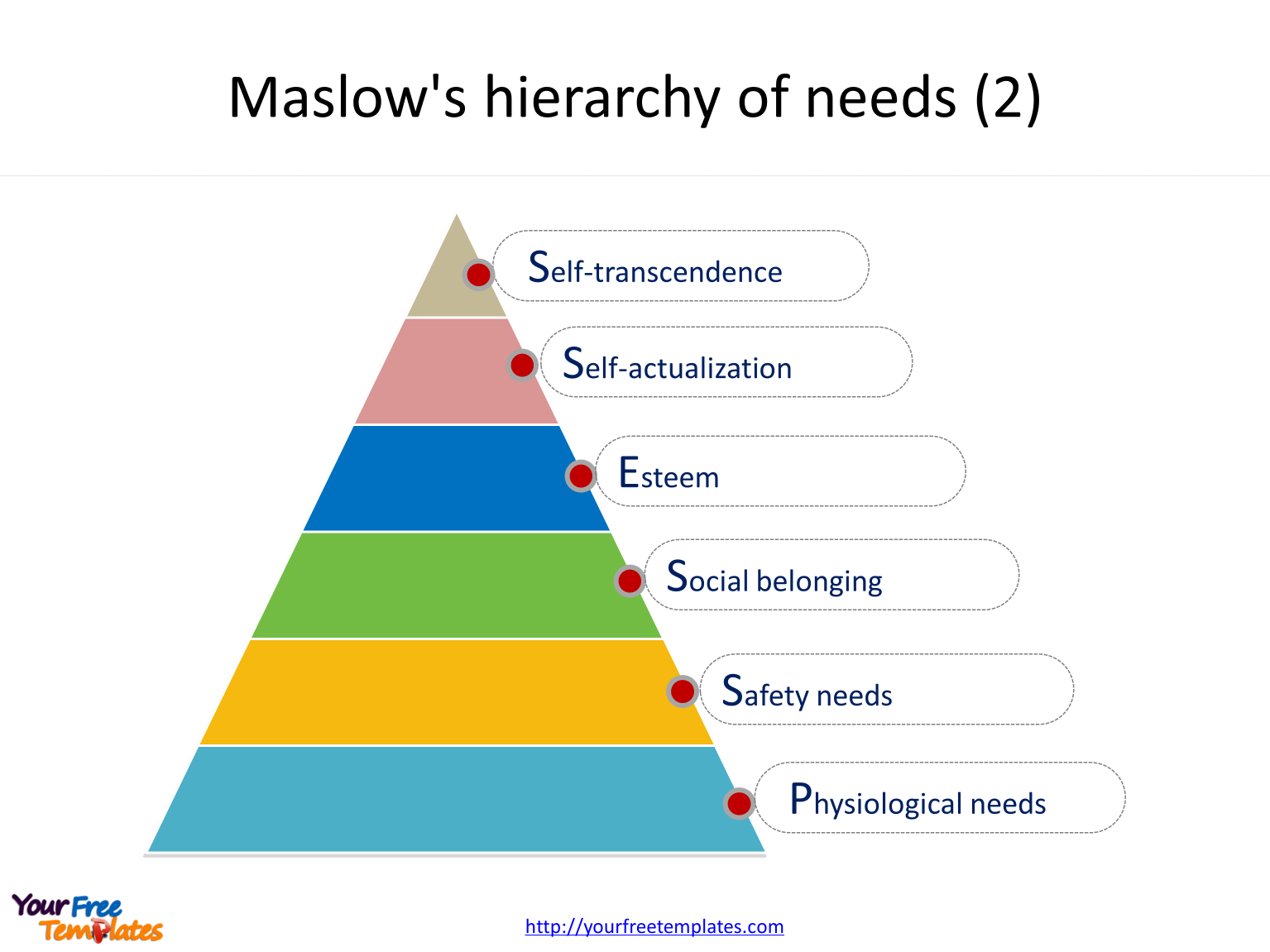
Maslow’s introduction of self-transcendence to his hierarchy acknowledges that the fulfillment derived from helping others and contributing to a cause larger than one’s self can be a powerful source of motivation and personal growth. It suggests that the journey of self-actualization does not end with achieving personal goals and aspirations but extends into the realm of communal and global well-being, marking the ultimate expression of human potential.
For detailed info on Maslow’s hierarchy of needs, please refer to Wikipedia.
Size:73K
Type: PPTX
Aspect Ratio: Standard 4:3
Click the blue button to download it.
Download the 4:3 Template
Aspect Ratio: Widescreen 16:9
Click the green button to download it.
Download the 16:9 Template








